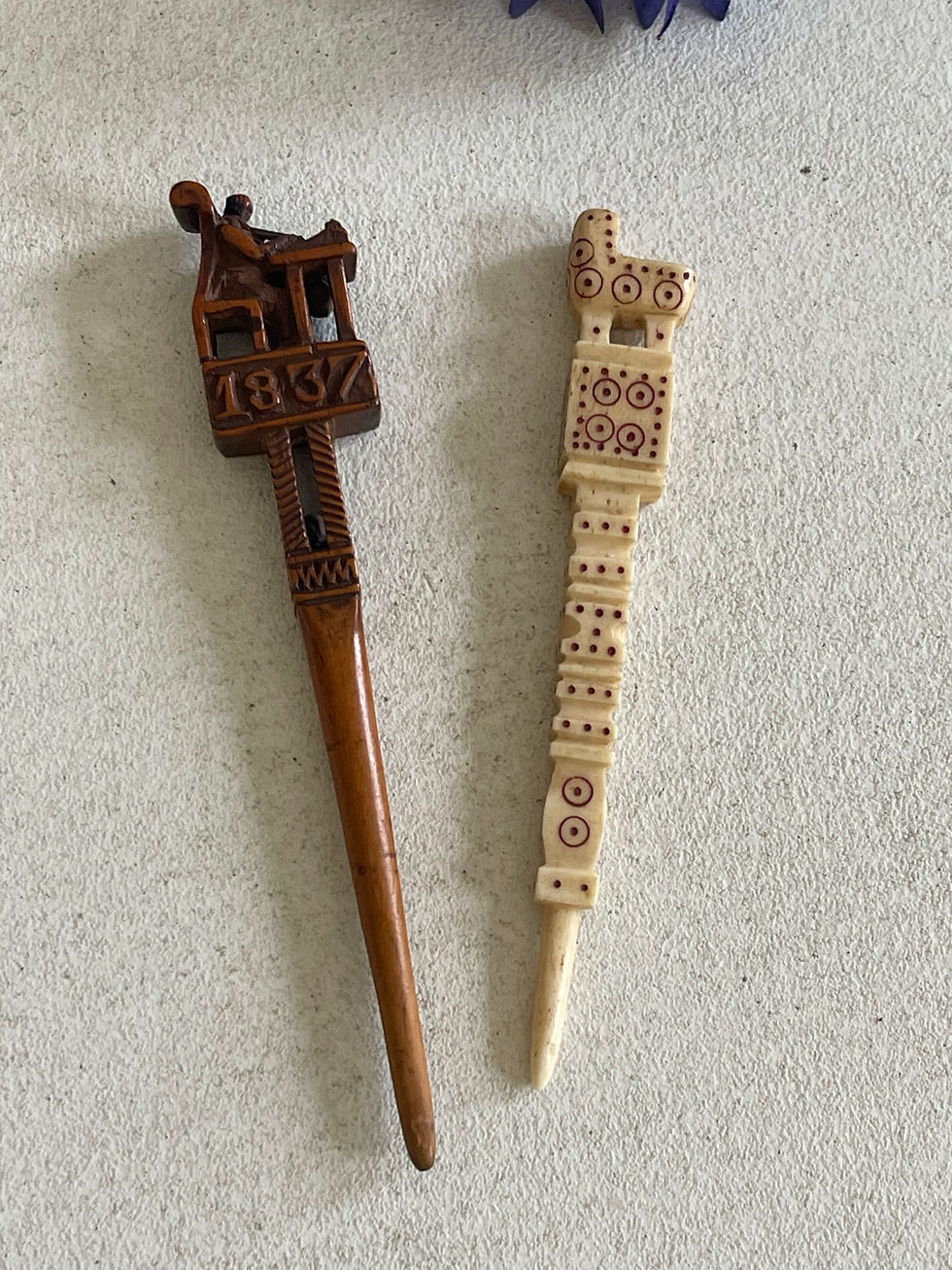Two Exquisite Antique Sewing Stilettos: Tools of Precision and Beauty
- Opus Antiques UK

- Jul 29
- 2 min read
In the world of antique needlework tools, few items capture both artistry and utility as elegantly as the sewing stiletto. The two examples pictured here — one intricately carved from bone, possibly a Prisoner of War piece and the other from fruitwood — offer not only insights into the craft but also a glimpse into the cultural and decorative traditions of their makers.
What is a Sewing Stiletto?
Sewing stilettos were essential tools in a 19th-century needleworker’s kit. Typically tapering to a fine point, they were used to:
Guide fabric under the sewing machine needle
Hold folds or pleats in place while hand stitching
Turn out sharp corners (such as in collars)
Create or enlarge holes in fabric for eyelets or embroidery
Their function often overlapped with that of an awl, but stilettos were more refined, meant for delicate materials and fine work.
The beautiful antique treen

fruitwood example is intricately carved and even dated -1837. There is a figure at the top who is sitting at a desk writing. There is a little ball in the open cage,beneath the desk and also one in the open cage of the main body of the stiletto. It also has the letters Vt and Hs carved on it.
This is a superb example of a beautiful piece with so many attributes but was also made for a purpose. In my view it was and is far too good to have been used.
It measures 11cml
The bone example decorated with red pigment-filled circular incisions and geometric motifs is typical of the decorations used by Prisoners of War in the late 1700s. On the top of this tool is a cradle with a baby inside. Maybe it was as a gift for a new mother- a really charming and unique piece. It measures 10cm l.
These two stilettos reflect more than just sewing — they tell a story of women’s labour, artistic expression, and domestic life in the 18th and 19th centuries. Whether finely scrimshawed or simply carved by hand, each one is a testament to patience, craftsmanship, and beauty in the everyday.









































Khelraja proudly presents the best India slot game collection for players seeking real fun and real winnings. From traditional reels to modern jackpots, every game brings excitement with a desi twist. Enjoy fair gameplay, smooth graphics, and massive rewards. Experience India’s most entertaining online slot destination only on Khelraja. Spin to win today!
Drop into Sprunki Game - no rules, just rhythm! Mix sounds, awaken characters, and create legendary tracks in this fan-made Incredibox mod.
The redesigned Geometry Dash features brand-new levels to jump, soar, and flip through! Enjoy dynamic lighting effects, enhanced speed, and an abundance of new icon customizations.